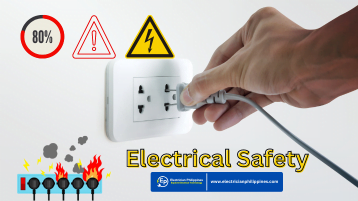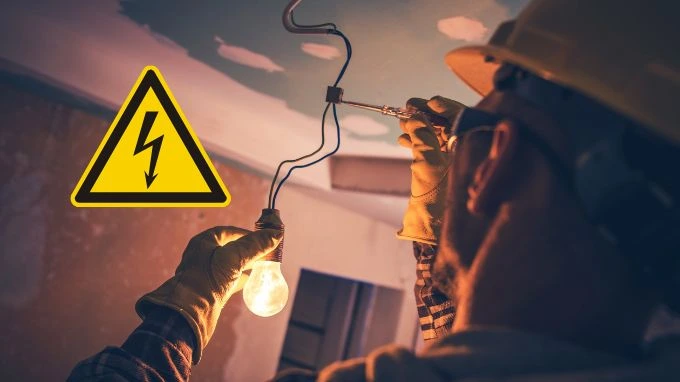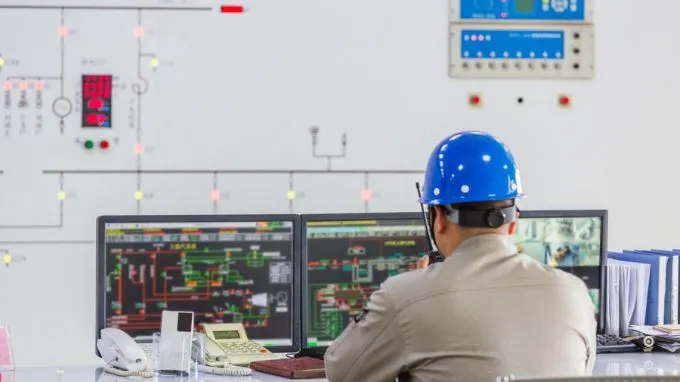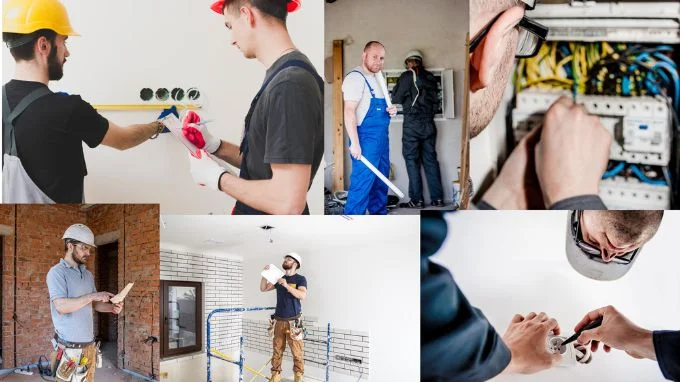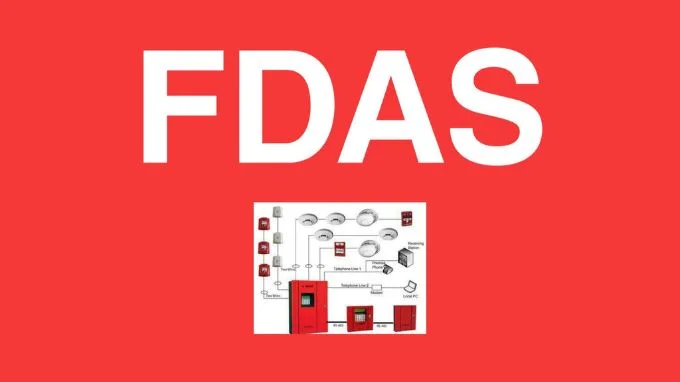
Fire Alarm System.
- A fire alarm system has a number of devices working together to detect and warn people through visual and audio appliances when smoke, fire, carbon monoxide, or other emergencies are present. These alarms may be activated automatically from smoke detectors, and heat detectors or may also be activated via manual fire alarm activation devices such as manual call points or pull stations. Alarms can be either motorized bells or wall mountable sounders or horns. They can also be speaker strobes which sound an alarm, followed by a voice evacuation message which warns people inside the building not to use the elevators.
The most common types of Fire Alarm Systems are Conventional and Addressable.
- Conventional Alarm System – A conventional system is the simplest type of protected premises alarm system. When an alarm-initiating device, such as a smoke detector, sends a signal to the FACU, all of the alarm-signaling devices operate simultaneously. Fire-alarm system annunciation enables emergency responders to identify the general location, or zone, of alarm device activation.

- Addressable Alarm Systems – Fire alarm systems display the location of each initiating device on the FACU and an annunciator panel if provided. This connection enables emergency responders to pinpoint the specific device that has been activated. Addressable systems reduce the amount of time that it takes to respond to emergency situations. These systems also allow repair personnel to quickly locate and correct malfunctions in the system.
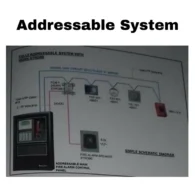
Fire Detection and Alarm System is composed of the following:
- Fire Alarm Control Panel also called “FACU”.
- Initiating Devices; pull stations, heat detectors, carbon monoxide detectors, and smoke detectors.
- Manual Initiating Devices; Fire Alarm Full Station and Manual Call Point.
- Notification Devices; Bell, Siren, Horn, Strobe Lights, Speakers, etc.
Fire Alarm Control Panel (FACP) also called as Fire Alarm Control Unit (FACU).
- This component, the hub of the system, monitors inputs and system integrity, controls outputs, and relays information. A fire alarm control panel (FACP), fire alarm control unit (FACU), or simply fire alarm panel is the controlling component of a fire alarm system. The panel receives information from devices designed to detect and report fires, monitors their operational integrity and provides for automatic control of equipment, and transmission of information necessary to prepare the facility for fire based on a predetermined sequence. The panel may also supply electrical energy to operate any associated initiating device, notification appliance, control, transmitter, or relay. There are four basic types of panels: coded panels, conventional panels, addressable panels, and multiplex systems.
Conventional Fire Alarm Control Panel.
- A conventional fire alarm control panel employs one or more circuits, connected to initiating devices (usually smoke detectors, heat detectors, duct detectors, manual pull stations, and sometimes flame detectors) wired in parallel. These sensors are devised to dramatically decrease the circuit resistance when the environmental influence on any sensor exceeds a predetermined threshold. In a conventional fire alarm system, the information density is limited to the number of such circuits used. To facilitate location and control of fire within a building, the structure is subdivided into definite areas or zones. Floors of a multistory building are one type of zone boundary.
Zones.
- Zones are usually made by dividing a building or area into different sections. Then depending on the specific zone, a certain number and type of device are added to the zone to perform its given job.
Addressable Fire Alarm System.
- An addressable system gives each detector an individual number or address. Addressable systems allow the exact location of an alarm to be plotted on the FACP while allowing several detectors to be connected to the same zone. In certain systems, a graphical representation of the building is provided on the screen of the FACP which shows the locations of all of the detectors in the building, while in others the address and location of the detector or detectors in alarm are simply indicated.
- Addressable systems are usually more expensive than conventional non-addressable systems, and offer extra options, including a custom level of sensitivity (sometimes called Day/Night mode) which can determine the amount of smoke in a given area and contamination detection from the FACP that allows determination of a wide range of faults in detection capabilities of smoke detectors. Detectors become contaminated usually as a result of the build-up of atmospheric particulates in the detectors being circulated by the heating and air-conditioning systems in buildings. Other causes include carpentry, sanding, painting, and smoke in the event of a fire. Panels can also be interconnected to monitor a very large number of detectors in multiple buildings. This is most commonly used in hospitals, universities, resorts, and other large centers or institutions.
Initiating Devices.
- These devices act as inputs to the fire alarm control unit and are either manually or automatically activated. Examples would be devices such as pull stations, heat detectors, carbon monoxide detectors, and smoke detectors. Heat and smoke detectors have different categories of both kinds. Some categories are beam, photoelectric, ionization, aspiration, and duct.
Here are the common initiating devices:
- Fire Alarm Full Station – A fire alarm pull station is an active fire protection device, usually wall-mounted, that, when activated, initiates an alarm on a fire alarm system. In its simplest form, the user activates the alarm by pulling the handle down, which completes a circuit and locks the handle in the activated position, sending an alarm to the fire alarm control panel. After the operation, most fire alarm pull stations must be restored to the ready position using a special tool or key in order for the panel to be reset. Primitive manual stations, requiring only a single action or hand motion to activate, can be subject to unwanted activation by jarring or accidental contact. Early strategies to cope with this problem included requiring the operator to break a pane of glass to release an internal spring-operated mechanism. Manual pull stations that require two hand motions, such as lift up and pull down, or push in and pull down, have since replaced the break-glass and single-action models in many modern installations.
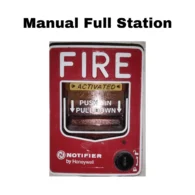
- Manual Call Point – Also known as MCP, Manual call points are used to initiate an alarm signal and operate by means of a simple button press or when the glass is broken revealing a button. They can form part of a manual alarm system or an automatic alarm system. There will be an indicator on the monitoring unit for a visual indication to locate the call point easily, and there should be a visual identifier of the unit which triggered the alarm, typically a mechanical flag that operates on a latch and must be manually reset, e.g. by a key.
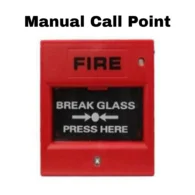
- Smoke Detector – A smoke detector is a device that senses smoke, typically as an indicator of fire. Commercial security devices issue a signal to a fire alarm control panel as part of a fire alarm system, while household smoke detectors, also known as smoke alarms, generally issue a local audible or visual alarm from the detector itself or several detectors if there are multiple smoke detectors interlinked.

- Duct Smoke Detectors – Duct smoke detectors are installed in the return or supply ducts or plenums of HVAC systems to prevent smoke and products of combustion from being spread throughout the building. Duct smoke detectors are specifically listed for installation within higher air velocities. Upon the detection of smoke, the HVAC system will either shut down or transition into a smoke-control mode. The detection of smoke in duct areas is sometimes difficult because the smoke can be diluted by the return air from other spaces or outside air. Duct smoke detectors are no substitute for other types of smoke detectors in open areas.

- Heat Detector – A heat detector is a fire alarm device designed to respond when the convected thermal energy of a fire increases the temperature of a heat-sensitive element. The thermal mass and conductivity of the element regulate the rate flow of heat into the element. All heat detectors have this thermal lag. Heat detectors have two main classifications of operation, “rate-of-rise” and “fixed temperature”. The heat detector is used to help in the reduction of property damage. It is triggered when the temperature increases.
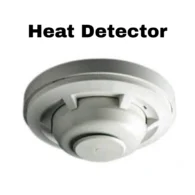
- Carbon Monoxide Detector – A carbon monoxide detector or CO detector is a device that detects the presence of carbon monoxide (CO) gas to prevent carbon monoxide poisoning.

Notification Devices.
- This component uses energy supplied from the fire alarm system to inform the proximate persons of the need to take action, usually to evacuate. This is done by means of pulsing incandescent light, flashing strobe light, electromechanical horn, siren, electronic horn, chime, bell, speaker, or a combination of these devices.
- Notification Appliances utilize audible, visible, tactile, textual, or even olfactory stimuli (odorizer) to alert the occupants of the need to evacuate or take action in the event of a fire or other emergency. Evacuation signals may consist of simple appliances that transmit uncoded information, coded appliances that transmit a predetermined pattern, and or appliances that transmit audible and visible textual information such as live or pre-recorded instructions, and illuminated message displays.
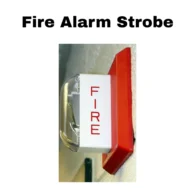

Firefighter’s Phone System.
- Firefighter’s phone system is a stand-alone, Plain Old Telephone System (POTS) firefighter’s phone uses no bell ringing voltage, no dial-tone, and you can’t dial-up any other building. Instead of ringing, the phone at the fire command center just detects another phone plugged in and sounds an alert tone until answered.

Fire Sprinkler Systems.
- A fire sprinkler system is an active fire protection method, consisting of a water supply system, providing adequate pressure and flowrate to a water distribution piping system, onto which fire sprinklers are connected.
- Fire alarm systems monitor fire sprinkler water flow through the use of electronic flow switches that notify the FACU when water is flowing through the system. This action may, in turn, cause the notification and signaling devices to function.






